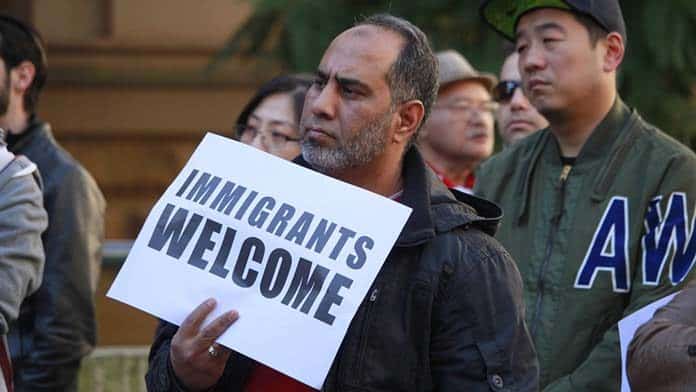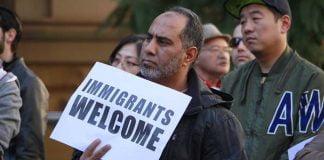Labor is fuelling racist views about migration, announcing a major crackdown on the number of people entering Australia to study or work.
It marks a retreat from the concept of a “Big Australia”, with the government boasting that net migration will fall from 510,000 in 2023 to 375,000 in 2024 and 250,000 in 2025. This is a return to pre-COVID levels after several years of catching up for the period where borders were closed.
The ALP is facing widespread worries about housing affordability. The Scanlon Institute reports that 33 per cent of Australians are concerned the migration intake is too large, the highest such figure in more than 15 years.
The response from Home Affairs Minister, Clare O’Neil, and Immigration Minister, Andrew Giles, is to “rebuild social licence”. That’s code for blaming migrants for problems the government won’t solve.
It’s a race to the bottom, with Prime Minister Anthony Albanese goading Opposition leader Peter Dutton that “there were more than 100,000 asylum-seekers claiming protection” from his time as Home Affairs Minister.
The new migration policy was announced by Albanese on 11 December, shortly after the government caved in to Dutton and rushed through draconian new restrictions on non-citizens released from indefinite detention.
Taken together, the crackdowns are a weaponisation of racist myths that foreigners are responsible for housing shortages and crime.
Rather than building public housing and ordering rent freezes, Labor is turning migrants into scapegoats. It’s a strategy that risks stoking racism.
Two objectives
Labor’s new migration strategy includes eight “key actions”. But they boil to two objectives—cutting migration numbers and recruiting more high-skilled workers.
The first victims will be international students, with tougher language standards and “genuine student” tests.
It will be harder to get a second student visa or to move between university and vocational education.
International student numbers shot up after the end of the pandemic. These measures are designed to slash numbers quickly, especially among those attending cheaper institutions.
There is no concern for the students themselves, whose high fees are a major export earner, worth $41.3 billion in the 12 months to September 2023.
But Labor is also using its changes to help the bosses who are facing shortages of skilled workers.
There is compassion for employers who can’t find workers, but none for refugees and asylum-seekers still living in limbo.
Labor could grant permanent visas tomorrow to refugees who spent years in offshore detention in Papua New Guinea or Nauru, or to the 12,000 victims of the flawed, so-called “fast track” system designed to keep out asylum-seekers.
It could make family reunion easier for migrants already settled here. Or slash the waiting time for partner visas, which has blown out to as much as eight years for offshore applications.
But its focus is on boosting profits.
Labor will introduce a Skills in Demand visa to make it easier for Australia to attract highly skilled workers and a Talent and Innovation visa for migrants “who can drive growth in sectors of national importance”.
As the government statement says, “Our task is to get migration working for the nation. Reorienting the program to address our national challenges … And building better planning in the system so we can get the skills we need, where we need them.”
Shortfall
Previous scare campaigns about the level of migration have centred on concerns about jobs, urban overcrowding or traffic jams.
This time the focus is on housing. Housing Australia, a federal government agency, predicts a shortfall of 175,000 homes by 2027.
Rents for units are increasing on average at about 10 per cent a year. Everyone has stories about long queues to inspect empty properties.
But it’s not high migration that is slowing the rate at which private houses and units are built but shortages of labour and materials, and high interest rates.
Migrants need housing but they can also contribute to building it.
Government policy favours property speculators and landlords. When Labor blames migration it is deflecting attention away from its refusal to build homes.
Meanwhile negative gearing and capital gains tax discounts for property investors will cost the government $39 billion this year—78 times what Labor is proposing to spend through its housing fund.
And many investment properties simply stand empty. In Victoria, the Parliamentary Budget Office estimates that 10,000 homes are long-term vacant.
As one local councillor put it, “People can’t get into housing, but there’s an abundance of housing—it’s just not being put on the market.”
Migrants don’t cause housing shortages—government support for property speculators is to blame.
By David Glanz






